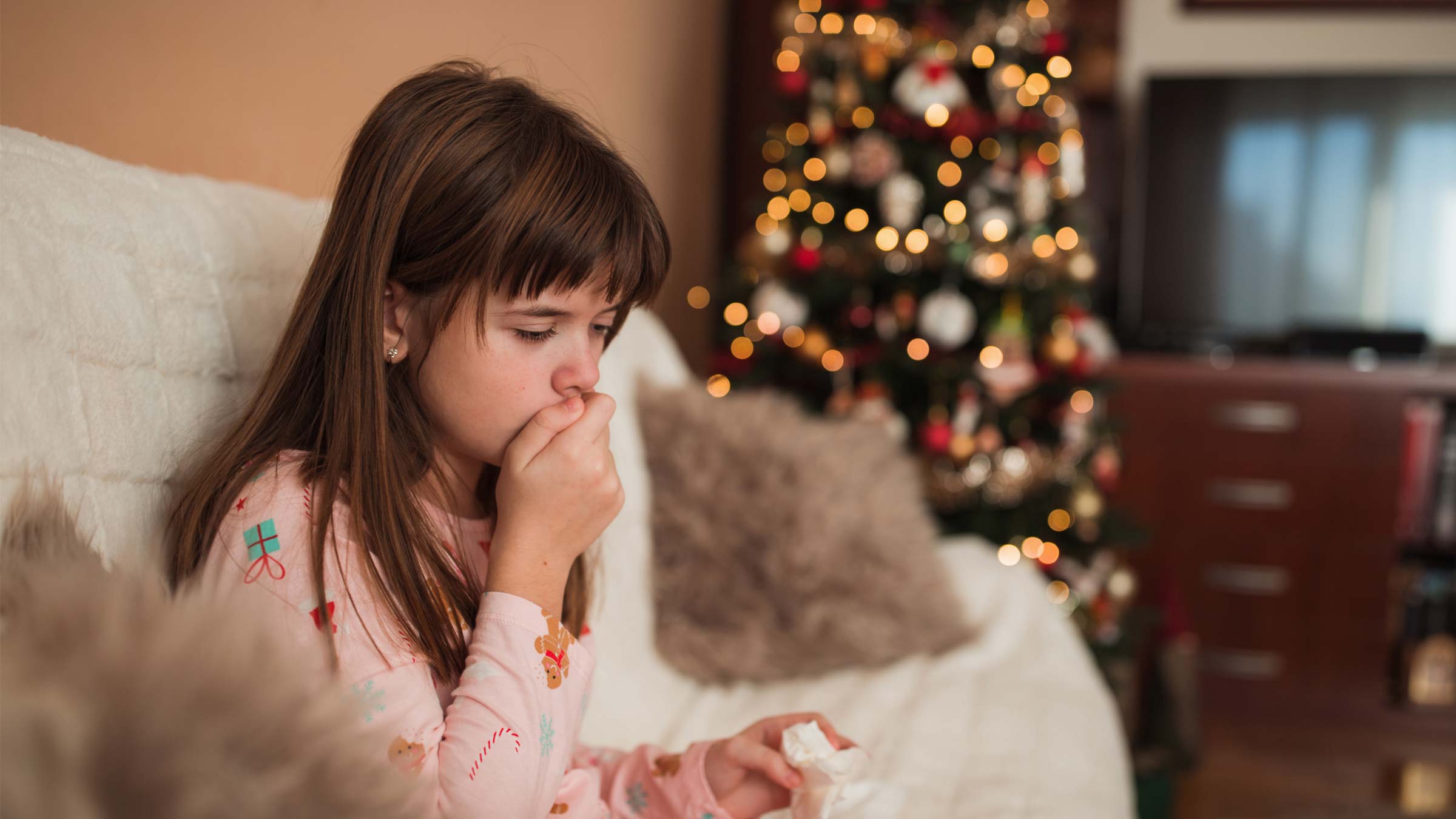
Pollen from grass and other plants is a common cause for sneezing and watery eyes.
But, even in the winter when a lot of plants go dormant, you could still be sneezing and rubbing your eyes. The problem may be indoors. You might be allergic to what’s in your home: dust, mold, cleaning products or pet dander, microscopic skin cells that pets with fur or feathers shed.
What are the most common winter allergies?
The most common winter allergies are:
- Dust mites — microorganisms that live in dust
- Pet dander
- Mold
How are winter allergies different from a cold?
Colds come from viruses that spread.
An allergic reaction happens because an allergen, though it may not be harmful, triggers your immune system to make antibodies that attach to some cells. The cells then release histamine, a chemical that leads to allergy symptoms such as sneezing, congestion and itchy eyes.
Colds and winter allergies share a lot of the same symptoms: congestion, sneezing and a stuffy nose. The symptoms that sets them apart is itchiness. If your nose or eyes are itchy, you probably have an allergy rather than a cold.
Can you be allergic to extreme heat or cold?
When you have an allergy, you develop a specific immune response to something. You can’t develop an immune response to temperature, but you can be sensitive to it.
Cold and hot can cause hives for some people, which is not an allergic reaction, but it can be treated with antihistamine medications just as allergies can be.
Is ‘Christmas tree syndrome’ real?
Yes. Christmas trees can cause an allergic reaction in some people, leading to watery eyes, runny noses or trouble breathing. This allergy is sometimes called Christmas tree syndrome, or Christmas tree dermatitis if you get a rash.
Mold growing on the Christmas tree is most likely triggering the allergic reaction. Dust on branches and some lingering pollen from the pine or other plants could contribute, to a lesser extent.
People with rashes might be allergic to a component of the Christmas tree’s sap.
A fake tree might not be any better if it’s dusty or stored in a damp basement, humid garage or attic where mold can grow.
What’s the best medicine for winter allergies?
Along with trying to avoid the allergens, there are a lot of safe over-the-counter medication options for reducing or eliminating your symptoms.
For relief of:
Nasal symptoms
- Antihistamine tablets
- Nasal sprays, which can be used for both nasal symptoms and eye symptoms. Steroid nasal sprays are most effective when used daily, and antihistamine nasal sprays can be used daily or whenever you need them.
Eye symptoms
- Antihistamine eye drops
Rashes/itching
- Antihistamine tablets
All symptoms
When you receive allergy shots, you’re given increasing amounts of the allergen so that your body builds up a tolerance to it and reduces the severity and number of symptoms the allergen causes you.
If you have an eye condition such as glaucoma or cataracts, it’s best to ask your eye doctor before using over-the-counter nasal sprays. There are some side effects of nasal sprays that you’ll want to avoid if you have an eye condition.
Over-the-counter medicines can work very well for allergies, but if they’re not helping your symptoms enough or if you aren’t sure what you’re allergic to, it may be a good idea to seek out an allergist. They can prescribe medications or allergy shots that can reduce your symptoms.

Ready to learn more about allergy and immunology care?
Ohio State's allergy and immunology team provides comprehensive care backed by one of the nation's leading academic health centers.
Expert care starts here




